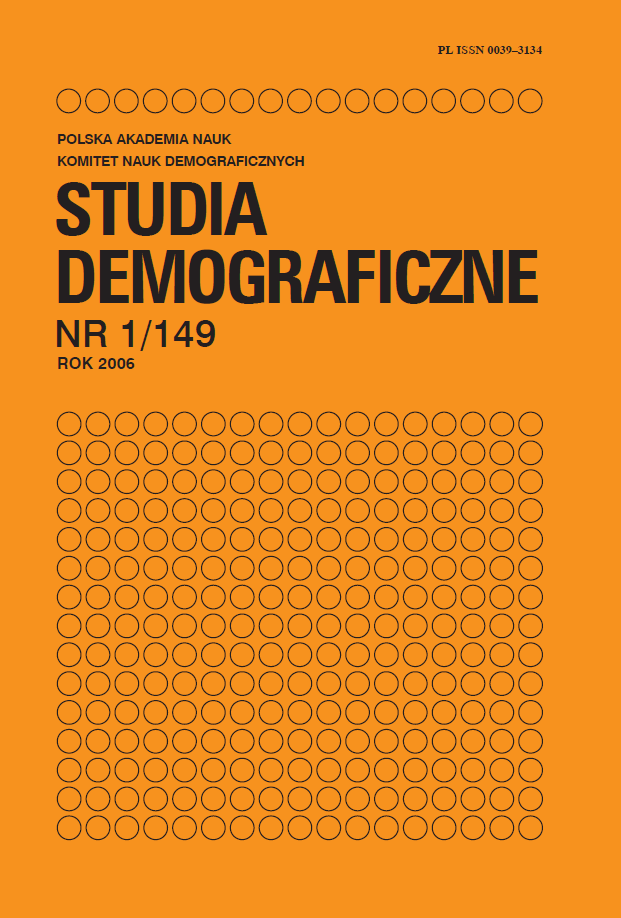Imigracja do Polski w latach 1989–2002 na podstawie wyników NSP 2002
Main Article Content
Abstract
The article presents a detailed analysis of a spatial distribution of immigration to Poland in the period 1989-2002 based on the data from the National Census 2002 (the data used refer to the lowest spatial disaggregation i.e. they refer to immigrants in gminas). Despite the fact that the census data show the stock of immigrants remarkably lower than estimates provided by several institutions, the regional analysis reveals a spatial distribution which seems to reflect the spatial pattern of the real immigrant population. One can also discuss reasons behind that pattern. According to the census data, at the end of May, 2002, there were 85,5 thousand persons who came to Poland after 1989. Among them 81.5% had a Polish citizenship and 41.3% arrived from Germany and the USA, therefore one can suppose that return migration contributed remarkably to that population. Immigrants came to the largest and more developed metropolies: Warsaw (11.3 thousand), Kraków (3.4), Gdansk, Gdynia and Sopot (3.4), Wroclaw (2.8) and Lodz (2.0). Altogether the main metropolitan areas concentrated 40% of the total immigrant population. Both immigration rates and the immigration share in the total inflow were the highest values in gminas located at the borders and the Warsaw agglomeration. They were also at the high level in sites considered as interested for tourists.
Article Details
References
[2] Grzymała-Kazłowska A., Iglicka K., Jaźwińska E., Kaczmarczyk P., Kępińska E., Okólski M., Weinar A., 2002, Wpływ migracji zagranicznych w Warszawie na sytuację na stołecznym rynku pracy, CMR Working Papers. Seria Prace Migracyjne, 44, Instytut Studiów Społecznych UW, Warszawa.
[3] Migracje zagraniczne ludności 2002, GUS, Warszawa 2003.
[4] Migracje długookresowe ludności w latach 1989–2002 na podstawie Ankiety Migracyjnej, GUS, Warszawa 2004.
